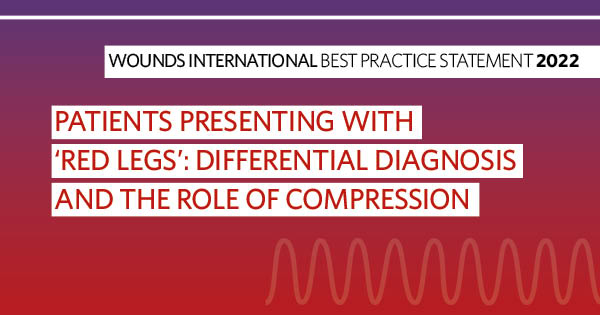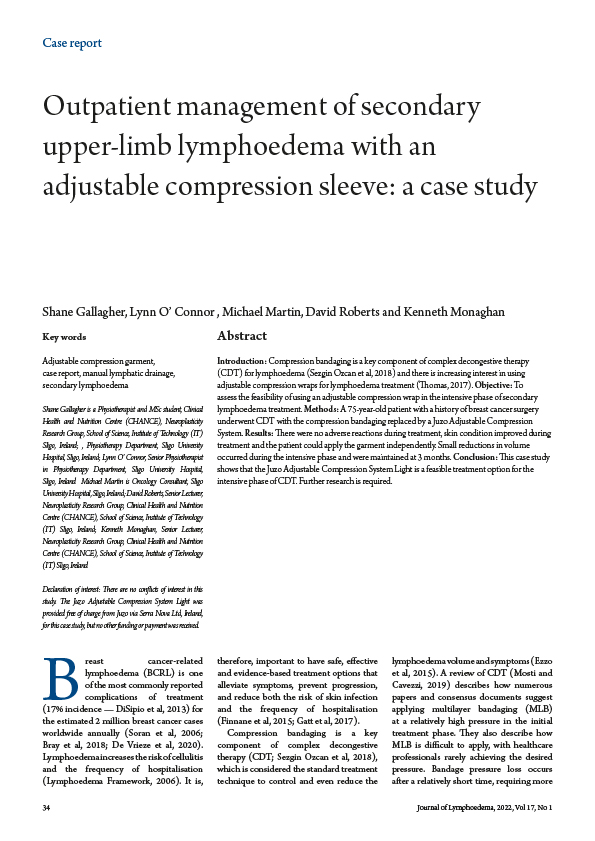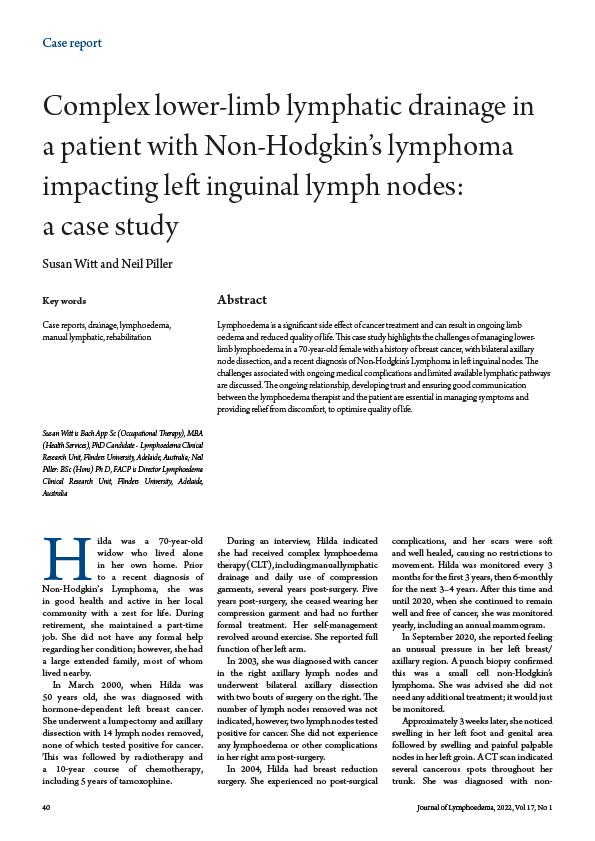<p>Background: Early intervention is an important facet of the prevention of secondary lymphoedema. However, it is difficult to predict symptoms before swelling becomes clinically significant.</p>n<p>Aims: To detect the potential occurrence of secondary lymphoedema due to lymph node dissection (LND) by examining variance in body water composition from pre- to early post-operative phases.</p>n<p>Methods: This prospective observational study was carried out on two groups of patients who had undergone gynaecologic surgery, with or without LND (LND and control [CONT] groups, respectively). Weight, lower-limb circumference, and the ratio of extracellular fluid to total body fluid (E/T) were measured preoperatively and on postoperative day 7 (POD 7).</p>n<p>Results: Eighteen patients completed the study (LND group, 12; CONT group, 6). Two patients in the LND group had genital swelling on POD7. In the LND group, a significant increase in E/T in the right leg and body trunk was observed.</p>n<p>Conclusion: Early changes in LND group E/T were observed. Further studies are required to develop a reliable index for predicting the occurrence of lymphoedema.</p>





